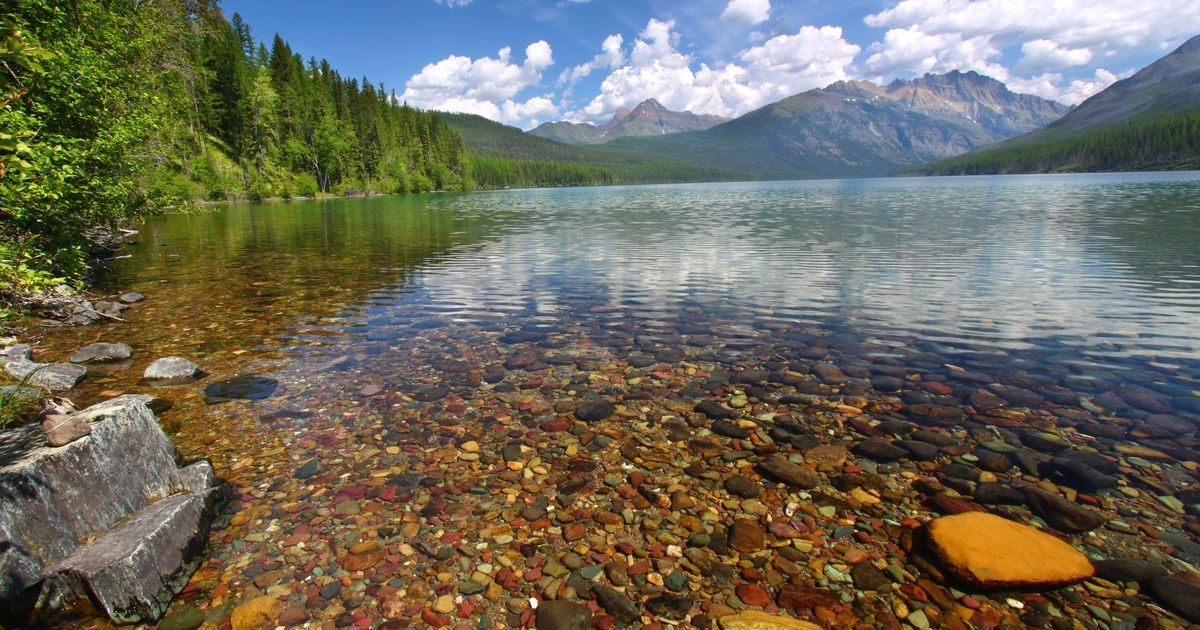Basic:


Freshwater
Water is at the center of life. Earth's abundant waters have allowed life to exist and flourish in almost every corner of the globe, from the hot, humid depths of the rainforest to the most arid deserts.
Beyond its biological importance, water is fundamental to many traditional Native American narratives – the sacred stories that give meaning and understanding to life and a connection to the past. Water
gives life to salmon of the Northwest, the sturgeon of the Great Lakes, and the wild rice harvests of Minnesota. In other places, water is the domain of the divine on Earth, like the Zuni Salt Lake of
New Mexico, which is inhabited by the great Salt Mother, called Ma'l Oyattsik'i by the Zuni people, keeper of the salt that nourishes life.
Yet freshwater availability, and the frequency and intensity of floods and droughts are changing. Water is highly sensitive to changes in weather and climate, and thus highly susceptible to the impacts of climate change.
A shifting climate may threaten Earth's ability to supply adequate sources of water to support life.
While climate change is expected to bring some benefits, scientists predict that climate change impacts on water resources will be negative overall. Earth’s surface temperature has risen nearly 1.5°C since pre-industrial
times,1 leading to increased water temperatures in rivers, lakes, springs, and other freshwater sources. Higher air temperatures also increase evaporation rates and cause water levels to drop in many regions. For example,
high temperatures and drought combined with irresponsible water management and allocation in the American Southwest decreased water levels in Lake Mead to just 27% of its capacity.2 Unfortunately, this is not a unique
circumstance – lakes and rivers across the world are drying up at unprecedented rates. This issue is compounded by the expected decrease in precipitation levels in most areas of North America. Amongst other impacts, lower
water levels can further endanger freshwater habitats, many of which already face anthropogenic degradation.3
Even a minor temperature rise may substantially reduce water quality and threaten freshwater fisheries. In large or deep bodies of water, such as northern lakes, warmer water temperatures are expected to extend and
intensify summer thermal stratification. Thermal stratification refers to layers of temperatures that occur in deep bodies of water: warmer, less dense layers of water overlay cooler, denser layers. Extending this
process may lead to oxygen depletion during the summer months, which can cause massive die-offs of aquatic life. However, less ice cover in certain regions during winter months may increase oxygen levels, thus
decreasing typical winter fish mortality, referred to as winterkill.4
Higher water temperatures may also affect fish survival and spawning, although the impacts vary across regions. Warm water fisheries may be able to expand their ranges, while cold-water species will be forced to migrate
northward or decline as habitats become unsuitable. Land animals and plant species are following a similar trend. Salmon populations are one such example of the decline of cold-water species due to warming waters and
habitat loss. Fourteen groups of cold-water fish in the Pacific Northwest are listed as threatened or endangered under the Endangered Species Act.5 The decline and potential extinction of these species is having impacts
on subsistence harvests and the health of Tribal members across the Pacific Northwest and Alaska.
Increasing water temperatures and lower volumes of water is leading to higher concentrations of phosphorous, a highly toxic compound found in fertilizers and sewage effluent. Phosphorous concentrations can swell in an ecosystem
and cause eutrophication – a build-up of chemical nutrients – that often leads to a substantial reduction in water quality. Eutrophic conditions promote rapid plant growth and decay. Excessive growth of phytoplankton, or algae
bloom, disrupts normal ecosystem functioning and reduces oxygen availability for aquatic species. Eutrophication also interferes with normal water treatment procedures, posing a health risk to some communities. Higher water
temperatures are also expected to increase bacteria and fungi content, exacerbating this risk.6
Climate scientists agree that North America will witness lower overall levels of precipitation, though precipitation events will be more extreme, especially at lower latitudes.7 The West is expected to undergo the most
extreme change, while the northeastern U.S. may only experience more rainfall without periods of drought. Winter snowpack, too, will decrease. In turn, peak spring runoff will occur earlier and more rapidly than in the past.
Communities and ecosystems dependent on snowmelt-fed rivers will likely experience water shortages during dry summer months.8 Glacial melt is expected to continue, and many small glaciers will disappear entirely.
Communities already under water stress will face more severe shortages in the future, and such shortages could slow economic development on Tribal lands in arid and semi-arid regions.9
The impacts of intense precipitation events, including tropical storms and hurricanes, may stress water management infrastructure, like dams and levees. Flooding can overburden existing infrastructure and ultimately destroy it,
which poses a risk to human lives in the worst situations and causes millions of dollars of damage in the best situations.10 Flooding can carry contaminants into bodies of water, like pesticides, sewage, salt, and other
chemicals. Heavy precipitation and flooding will also accelerate shore erosion, further threatening water quality and damaging coastal infrastructure.
Groundwater recharge rates may also be affected and exacerbated by climate change, which will have the most serious consequences for Tribes in arid and semi-arid regions of the country. Preliminary studies conducted predict that
groundwater supply will decrease under expected climatic conditions, but that site specific studies and monitoring will be necessary to truly understand the changes in groundwater supply as a result of climate change.11
Aquifer recharge is influenced by a variety of factors, including the characteristics of overlying rocks and soils, duration of rainfall events, and rainfall season.12 Aquifer recharge is also affected by changes in rainfall
duration. Studies suggest that even a moderate decrease in rainfall could have a substantial effect on aquifer levels.13 Streams and lakes also provide water to groundwater sources; thus, altered stream flow or water levels
will reduce aquifer levels. In coastal areas, sea level rise and saltwater encroachment could seriously decrease freshwater quality as ocean water seeps into groundwater sources.
For many Tribes, these impacts indicate an uncertain future. This uncertainty is no more obvious than for the Tribes of the Pacific Northwest fighting for the restoration of salmon habitat, a species inextricable from their lives and
cultures. Seven species of salmon, whose populations have been declining for decades due to overharvesting and dams, must compete with the demands of hydropower, navigation, flood control, irrigation, and municipal uses for enough
water to reach inland estuaries to reproduce.14 Reliant on snowmelt, many streams and rivers have undergone a shift in runoff patterns and higher water temperatures – both leading to an unclear future for the salmon.
Already stressed by degraded freshwater streams and estuaries, some species of Pacific Northwest salmon may now be pushed even closer to the edge of extinction.
Diminishing freshwater resources will greatly impact everyone on the planet. Water is essential for life to grow and thrive, and should access to clean, safe water be restricted, all life will suffer. Individual, and more importantly,
governmental and industrial decisions made today will impact our future water resources and availability.